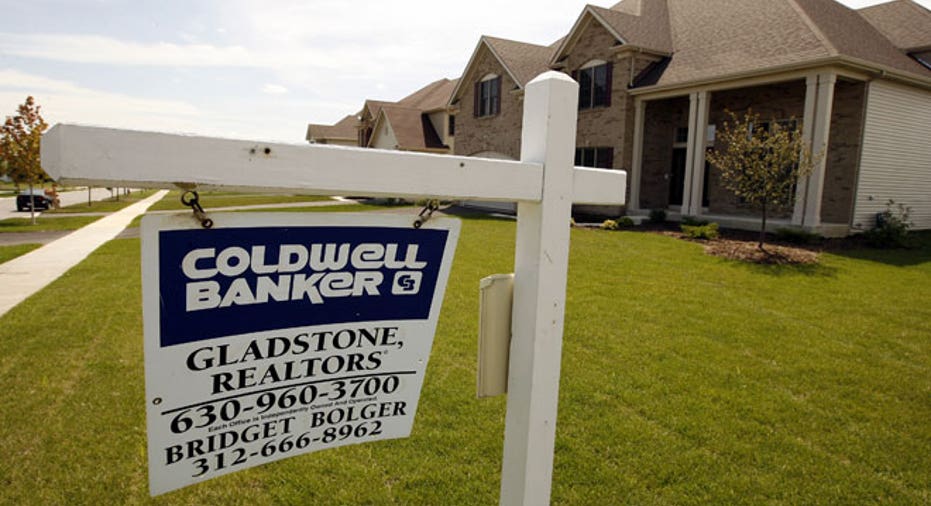Housing Market in 2013: Prices Rise, Lending Remains Tight

The housing market has been the backbone of the economic recovery, and its rebound continued in 2013.
In fact, the market made such strong gains, with home prices increasing 12% this year, that some experts worry about another potential bubble.
“This year was the second year of the home price recovery, prices aren’t increasing as fast now as they were at the start of the year and that’s a good thing -- it means they are less likely to get back into bubble territory,” says Jed Kolko, chief economist at Trulia. He says prices are still around 4% undervalued, and that during the last bubble they were 39% overvalued.
This year’s price recovery has brought many homeowners above water, with Zillow reporting 1.4 million borrows climbed above negative equity in the third quarter of 2013. The real estate company also reports home values are expected to gain $1.9 trillion through 2013 since 2005.
Rates Were Low, But Good Luck Getting a Loan
Mortgage rates have been fluctuating from their historical lows since the summer when talk of tapering the Federal Reserve’s $85 billion-a-month bond-buying program first started. In fact, rates for the 30-year fixed mortgage jumped to 4.42% from 3.35% in May when the central bank’s chairman mentioned policymakers could taper in the next two meetings.
“Higher rates do erode buying power,” says Kolko. “Rates rise hand in hand with the strength of the economy.”
Mortgage rates peaked at 4.6% in August and have held steady since September. Freddie Mac reported last week the rate on the 30-year loan increased to 4.47% from 4.42% the week prior, while the average rate on a 15-year fixed loan rose to 3.51% from 3.43%.
Experts expected rates to start increasing next year before the Fed’s official announcement of a $10 billion taper in January, and now they expect rates to rise even more, which can scare off potential buyers.
“Potential homeowners are very sensitive to the idea of changing interest rates,” says David Joy, chief market strategist at Ameriprise Financial. “We saw over the summer when rates increased about 100 basis points, it resulted in a slowdown.”
The market’s recovery has been investor-led this year, as they pounce on still-deflated home prices and low rates. But as prices and rates rise, real estate could lose some of its attractiveness.
“Higher prices make the math look worse for investors than it did a year or two ago,” says Kolko. “Investors have started buying less, but they are still holding onto their homes and renting them out, they aren’t selling as much.”
Lending standards remained tough this year, which Joy says will eventually “result in a healthier housing market overall, but it means the recovery is going to be slower.”
According to Jed Smith, managing director of Quantitative Research for the National Association of Realtors, the percentage of wannabe buyers with a FICO score greater than 740 is currently 57% well above the normal 40%.
Experts expect lending standards to ease next year. Kolko says less refinancing demand could also make it easier to get a loan next year. “The mortgage refinance business was smaller in 2013 and more banks will be looking to home purchases to pick up the revenue slack.”
Homebuyers Face Tough Competition
While new home sales for November came in at a five-year high -- with a whopping 22.7% jump to 1.09 million units -- the trend wasn’t around earlier in the year. In fact, housing experts say low inventory levels have been the major factor preventing a full housing recovery.
“For most of the year, new home starts have been way down in the 500,000 and 600,000 range,” says Smith. He says in a normal market, the pace of new homes is about 1.5 new units a month. “If we had a full housing market in terms of new construction levels, it would have brought 1.million to 1.5 million new jobs to the economy as well.”
According to Smith, inventory remains tight in many markets across the country with a 4.5-5.35.1-month supply in some markets, but only a two month supply in others.
Earlier this month, the National Association of Realtors reported sales of previously-owned homes fell 4.3% from November to an annual rate of 4.90 million units, the lowest level since December 2012. Inventory of existing home dropped 0.9% for the month to 2.09 million units. Despite this drop, existing home sales have been strong in 2013 and Smith expects existing home sales to come in at a pace of 5.1 to 5.2 million units next year. He adds homes didn’t sit on the market for very long this year, with an average of 40 days compared to 70 in the past.
“We expect new home sales to increase even more next year, but because there is limited supply, we expect prices to continue to rise in the 3-3.5% range, a significantly drop from the 13-15% increase we saw earlier this year,” says Smith.